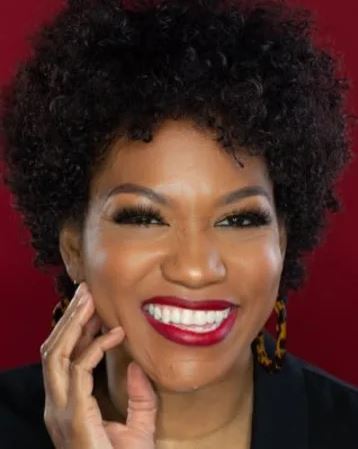Digital records from 19th Century give Black families a glimpse of their ancestry
Share
Explore Our Galleries
Breaking News!
Today's news and culture by Black and other reporters in the Black and mainstream media.
Ways to Support ABHM?
By Curtis Bunn, NBCBLK
After more than 20 years researching her family’s origin in America, Nicka Sewell-Smith found the name of an uncle who had filed a complaint about having his horse stolen. Another notation said he had shopped for bacon, a broom and tobacco in “Short’s Place” in Louisiana about seven months before the 13th Amendment was passed in 1865.
With her standard supply of popcorn and a beverage at her reach, Sewell-Smith clicked on, and learned that Hugh Short was a lawyer and owner of enslaved Black people. Then she came upon Short’s will, which listed the names of her great-great-great-grandparents near the bottom of the document.
“I could not turn from the page for an hour,” she said. “I had resigned myself to the fact that I was never going to find them. So, I called my cousin who had been searching also for 20 years and I said, ‘Guess what? We didn’t come here on a spaceship from Cameroon and land in North Louisiana.’”
A renowned genealogist, Sewell-Smith gathered much of the information through the Freedmen’s Bureau, a federal agency for formerly enslaved Black people created near the end of the Civil War in 1865. Its goal was to assist the newly freed in their transition out of slavery by negotiating labor contracts, legalizing marriages and locating lost relatives, among other things, documenting it all. It also provided food, housing, education and medical care to more than 4 million people, including poor whites and veterans displaced by war.
For decades, the information was hard to come by. It required patience and determination, attributes that allowed Sewell-Smith to hole up in the National Archives, libraries and research centers — and her desk at home — to go through archaic microfilm by the thousands, document by document.
However, this month, the genealogy site Ancestry.com unveiled a Black family lineage game-changer — 3.5 million records of previously enslaved Black people, available for free.
It is believed to be the world’s largest digitized and searchable collection of Freedmen’s Bureau and Freedman’s Bank archives. The collection has Black genealogists and habitual researchers thrilled because the descendants of the enslaved in America can learn more about their families in a far easier way.
“This is very exciting and will help many researchers, historians and ordinary people trying to learn more about their ancestry,” said Angela Dodson, CEO of Editorsoncall, a company that provides editorial services for writers. Dodson has done extensive work on researching her own family tree.

“It is often very difficult for Black Americans to trace their history because of the disruptions of slavery, being sold down river, etc.,” she said. “I am often haunted by something I read in one of the narratives of the formerly enslaved who remembered Black people just wandering the roads and trails after the Civil War looking for long-lost kin. This post-war era is a crucial period for trying to make some of these connections.”
Further, the collection is significant because it is most likely the first time newly freed African Americans appear in records after the Emancipation Proclamation in 1863, as many enslaved people were previously excluded from standard census and federal documents.
“The enormity of this is that this is something that we’ve known was there, but we thought it was beyond our fingertips,” Sewell-Smith said. “To see ancestors memorialized … there are documents within this collection where 100-year-old people are getting rations in 1865. In most people’s minds, you can’t trace that far back to Black folks. We automatically count that out. ‘Oh, that’s not possible, not on paper.’ But it’s right there.”
Read the full article and more stories of Black Geneology research here.
More Breaking News here.










Comments Are Welcome
Note: We moderate submissions in order to create a space for meaningful dialogue, a space where museum visitors – adults and youth –– can exchange informed, thoughtful, and relevant comments that add value to our exhibits.
Racial slurs, personal attacks, obscenity, profanity, and SHOUTING do not meet the above standard. Such comments are posted in the exhibit Hateful Speech. Commercial promotions, impersonations, and incoherent comments likewise fail to meet our goals, so will not be posted. Submissions longer than 120 words will be shortened.
See our full Comments Policy here.